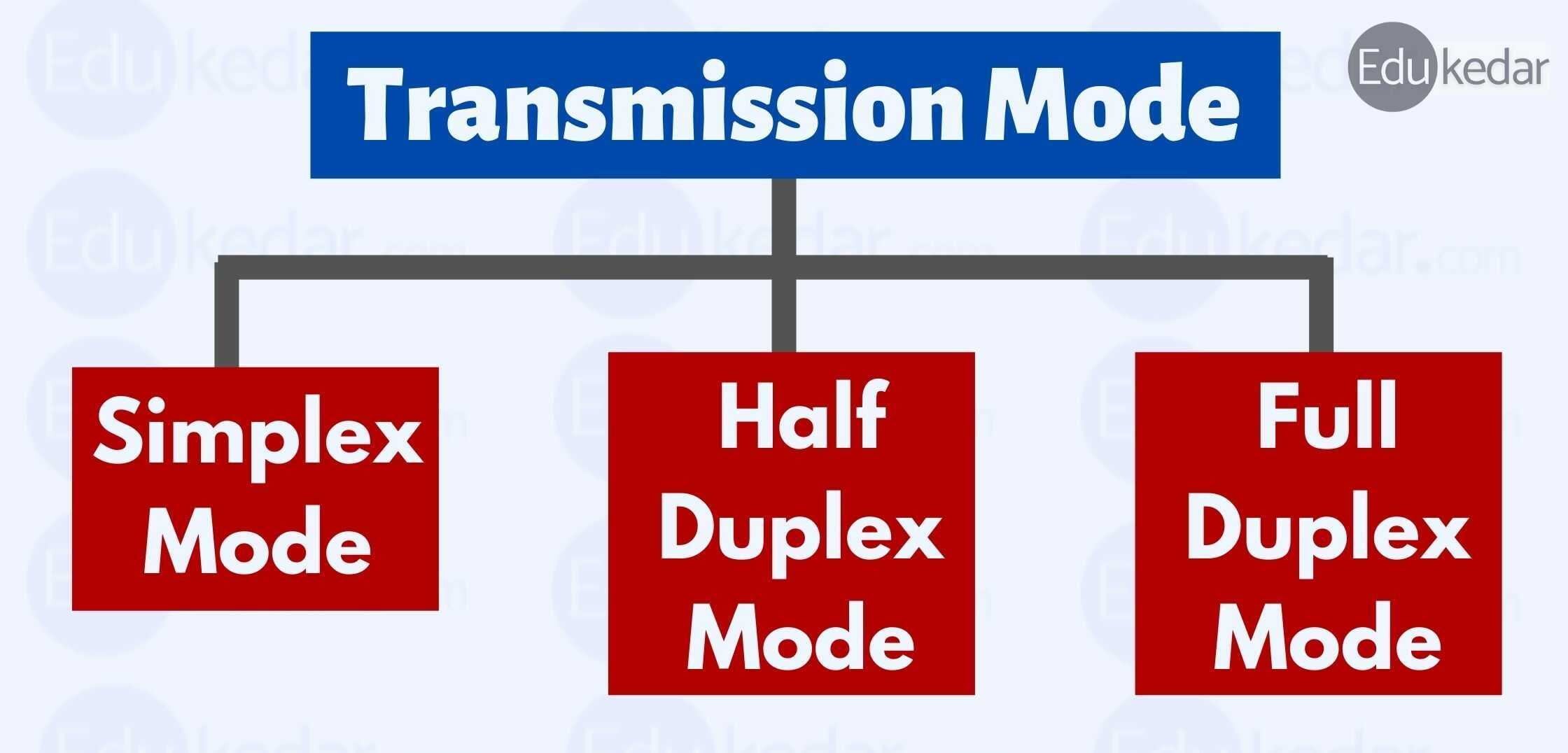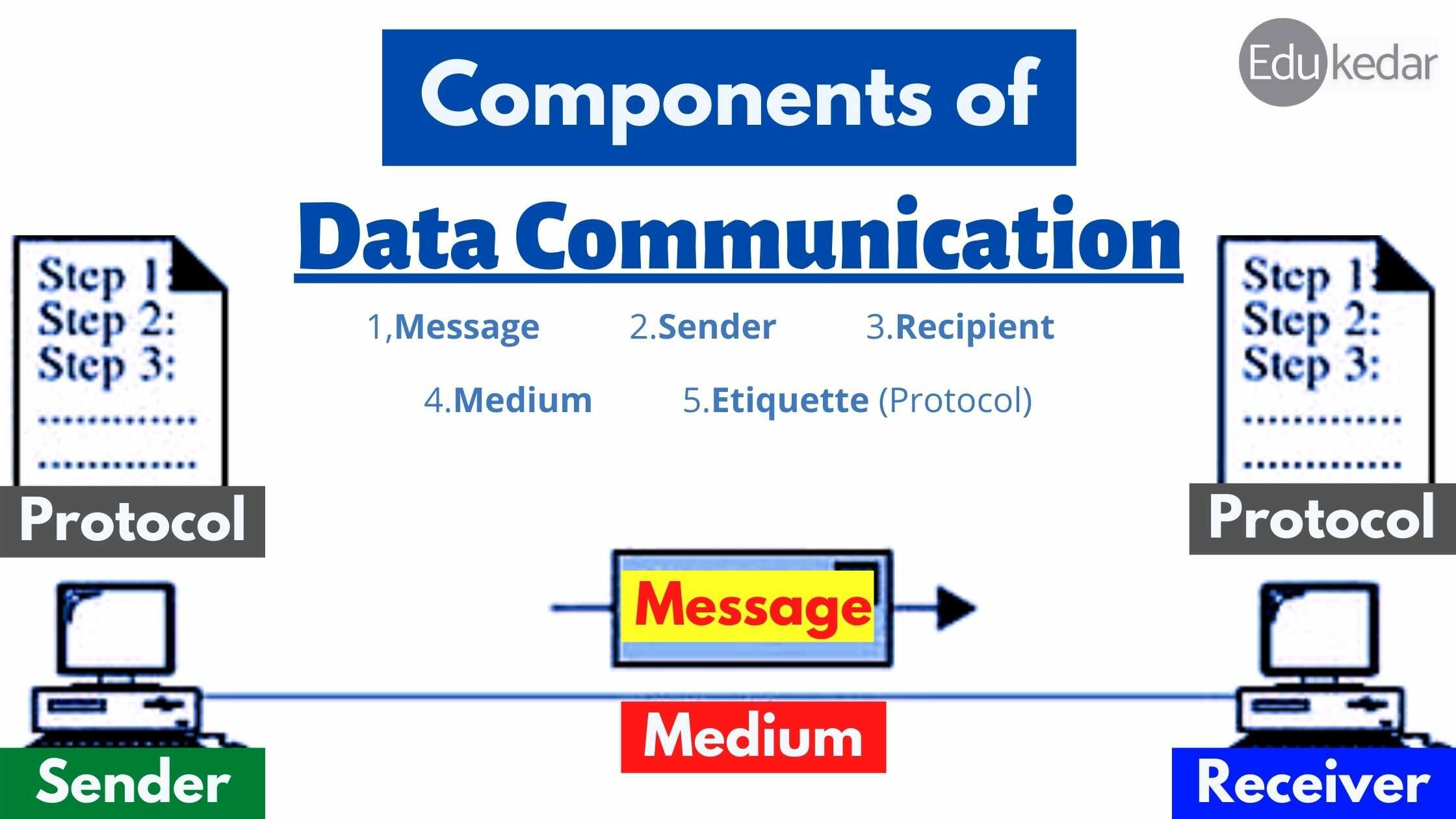
Data communication is the electronic exchange of data between two devices across a communication channel like a wire pair cable or Fiber optics. In this article, we have shared all the details about data communication.
Topics that are covered in this article are as follows;
- Definition of Data Communication
- Characteristics of Data Communication
- Types of Data Communication
- Components of Data Communication
- Protocols and Standards
⦿ Definition of Data Communication
The process of exchanging data and information electronically from one location to another over transmission media is known as data communication.
Only when communicating devices are part of a hardware and software-based communication system do data communications occur.
In a computer, Data communication allows electronic or digital data to be sent between two or more devices regardless of their geographical location, transmission medium, or data substance.
The message, sender, receiver, transmission medium, and protocol are all crucial elements in data communication.
⦿ Characteristics of Data Communication
Data communication has four critical characteristics that are as follows:
- Delivery
- Accuracy
- Timeliness
- Jitter
► Delivery
Data must be sent in the correct order from the source device to the correct destination.
► Accuracy:
The information must be supplied without errors. The data should be retransmitted if there is any inaccuracy during transmission.
► Timeliness:
Data must be given within the timeframe provided. The data that was given late has become unusable.
► Jitter:
Jitter is caused by an uneven or unexpected delay in the packet arrival time.
Must Read ➜ What is HTTP?
⦿ Types of Data Communication (Transmission Mode)

Here are the modes of Data transmission in communication.
- Simplex Mode
- Half-Duplex Mode
- Full-Duplex Mode
► 1. Simplex Mode
- A simplex mode of communication sends a message in only one direction.
- The message source (sender) works as the transmitter.
- The sender sends the message over the data channel to the receiver, The receiver is the destination of the message.
For example, Radio stations and TV broadcasts work as Simplex data communication. The point to be noted here is that there is no ability by the receiver to respond to the message in the simplex channel.
► 2. Half Duplex
- Half-duplex data communication system provides messages in both directions but only allows transfer in one direction at a time.
- In this process, once a party begins sending a transmission, the receiver must wait until the signal stops before responding.
- If both parties attempt to send data at the same time, they both fail.
For example, if you talk on a CB radio (Citizens band radio), you press a button and speak. But if the receiver attempts to press the button and speak at the same time then neither one of you hear either message. The CB radio system is not capable of sending both ways simultaneously.
► 3. Full Duplex
- A full-duplex is that type of data communication that works both ways at the same time.
- Full-duplex mode is basically a set of two simplex channels, one works as a forward channel and the other as a reserve channel.
- The Two channels link together at some point in a full-duplex system.
For example, Landline Telephone works on a full-duplex communication system. If someone wants to talk on the telephone, then both parties have the ability to speak at the same time. It is because the data carried both ways through the telephone line run simultaneously.
There is one more mode of communication that is Serial Communication, it is not talked about so much but for your knowledge purpose, take a look at this in brief.
► Serial Communication
- Serial Communication is that type of data communication that breaks up data into small pieces and sends the message one bit at a time through a channel.
- The receiver collects data in the form of small bits and reassembles them to compose the original message.
- Serial communication is the most common type of data communication between electronic devices.
For example, Data sent from a Modem device to the service provider works on the serial communication system.
Must Read ➜ Application Layer Protocols
⦿ Methods of Data Transfer in Communication
The following are examples of well-known data transfer methods:
- From one personal computer to another
- From a personal computer to a server computer
- Processor to Processor communication
► From one personal computer to another
Personal computers, in general, may interact and communicate with one another on a one-to-one basis. There are no limitations on how much information people can share with one another.
► From a personal computer to a server computer
In order to send, receive, and save data, a networked personal computer relies on a big computer known as the host computer. A mid-range server or a supercomputer can be used. The personal computer receives both processing and data from the host computer.
► Processor to Processor communication
This form of communication occurred between two or more computers that exchanged a considerable volume of data, such as a file or record updates, and so on. It also outlines how two or more computers communicate when working as a squad.
This sort of communication is common amongst computers in close proximity.
Data communication can be further subdivided into two subtypes.
They are as follows;
- Communication via the Internet
- Online and Offline Communication
► Communication via the Internet
Devices are directly connected to exchange information in this connection. A direct link is established between the devices exchanging data, and the data is transferred promptly. The capacity of the line and the amount of data to be transmitted determine the actual data transfer time.
► Online and Offline Communication
Information is not delivered instantly through this transmission. The data is being readied for transmission. Because the data is processed in batches before being shared at a predetermined time, this is a sort of batch process communication.
Must Read ➜ What is Cyclic Redundancy Check (CRC)?
⦿ Types of Signal in Data Communication
Data communication can be classified on the basis of signals into the following categories:
- Transmission of Analog Data Signal
- Transmission of Digital Data Signal
► Transmission of Analog Data
Data is communicated from one device to another in the form of analog signals or continuous waves in analog data transfer. A continuous electrical wave is used to generate analog signals. Sound waves, light waves, and radio waves are all instances of analog signals.
► Transmission of Digital Data
Data is transported from one location to another via electrical pulses or digital signals in digital data exchange. Electric pulses form the basis of a digital signal. Each electrical pulse represents bits that have been combined to form bytes. A computer is a device that receives and interprets digital data.
Data is transmitted using a telephone line, microwave technology, or satellite in digital data transfer. A modem is required on both the sending and receiving devices in this system. A modem is a device that converts analog signals to digital signals and back.
⦿ Components of Data Communication

Only when the communicating devices are part of a hardware and software-based communication system can the data communications process take place. The message, sender, receiver, transmission medium, and protocol are all critical parts of a successful data communication process.
Five (5) major Components of Data Communication are as follows:
- The Message
- The sender
- Recipient
- Medium of Transmission
- Etiquette
► 1. The Message
The data or information being sent from the sender to the receiver is referred to as a message. It could be made up of text, images, music, video, graphics, or photos, among other things.
► 2. The sender
The sender is a device that generates and sends messages. Text, numbers, photos, graphics, music, video, and other media may be used to convey the message. A sender is sometimes referred to as a source, transmitter, or node. In most data transmission systems, the computer functions as a transmitter.
► 3. Recipient
The transmitter sends a message to the receiver, which is a device that receives it. It’s also known as a sink. The receiver is usually located somewhere other than the sender. A computer, printer, or another computer-related device can be used. In addition, the receiver must be able to accept the message.
► 4. Medium of Transmission
It is the physical road or channel that the communication travels from the sender to the receiver. The communication medium can be wired, such as twisted-pair wire, coaxial cable, or fiber-optic cable, or wireless, such as lasers, radio waves, or microwaves.
A medium is a physical conduit or path by which a message is transmitted from the sender to the receiver. It’s required since it connects the sender and recipient. Twisted-pair wire, coaxial cable, fiber-optic cable, or wireless technologies such as lasers, radio waves, and microwaves may be used as the medium.
► 5. Etiquette (Protocol) in Data Communication
A protocol is a set of instructions for transmitting data between computers. These protocols define how a communication channel is established, how information is delivered, and how errors are recognized and repaired during the data communication process.
⦿ Protocols & Standards of Data Communication
The major protocols (etiquette) and standard of data communication are as follows:
- Sequencing of Data
- Routing of Data
- Flow of Information
- controlling of Errors
- Process of Coding
► Sequencing of Data in Communication
Data sequencing is the process of breaking down a large message into smaller chunks. A large communication is broken down into smaller, identical packets. If an error is identified, this strategy also decreases the quantity of data that must be resent.
► Routing of Data
Before delivering data, data routing is the process of determining the most efficient path between source and destination. This method also improves the efficiency of data transmission.
► Flow of Information
In terms of speed, not all computers are created equal. If the transmitter computer is faster than the reception computer, data flow is a mechanism that ensures proper data delivery.
► Controlling errors
These protocols’ primary function is to control errors. One of the most important functions of a communication protocol is to detect and recover faults. It ensures that data is sent without interruption. If a mistake is identified, it also solves the problem.
► Process of Coding
Only binary numbers are used by the computer. It uses binary digits to store all forms of data. Before being stored in the computer, the data is transformed to binary form. ASCII refers to the process of transforming data into binary form.
The American Standard Code for Information Interchange (ASCII) is an acronym for American Standard Code for Information Interchange.
This code is a set of standardized characters for encoding data. It was issued by ANSI in 1968. (American National Standard Institute). It has a 256-character capacity.